Grow a prepper garden.
Prepper gardens play a crucial role in ensuring food security and self-sufficiency during times of uncertainty and emergencies. In the face of natural disasters, economic instability, or unforeseen events that disrupt the food supply chain, having the ability to grow your own food becomes vital for survival and thriving. This article will guide you through the process of creating and maintaining a prepper garden, which will not only provide you with a sustainable source of fresh produce, but also grant you peace of mind, knowing that you are well-prepared to face any challenges that may come your way. From selecting the right location to mastering essential gardening techniques, I will explore various aspects of prepper gardening to help you become more self-reliant and resilient.
This is a pinnable post. Tap or hover over any image in this post to pin to your Pinterest Boards.
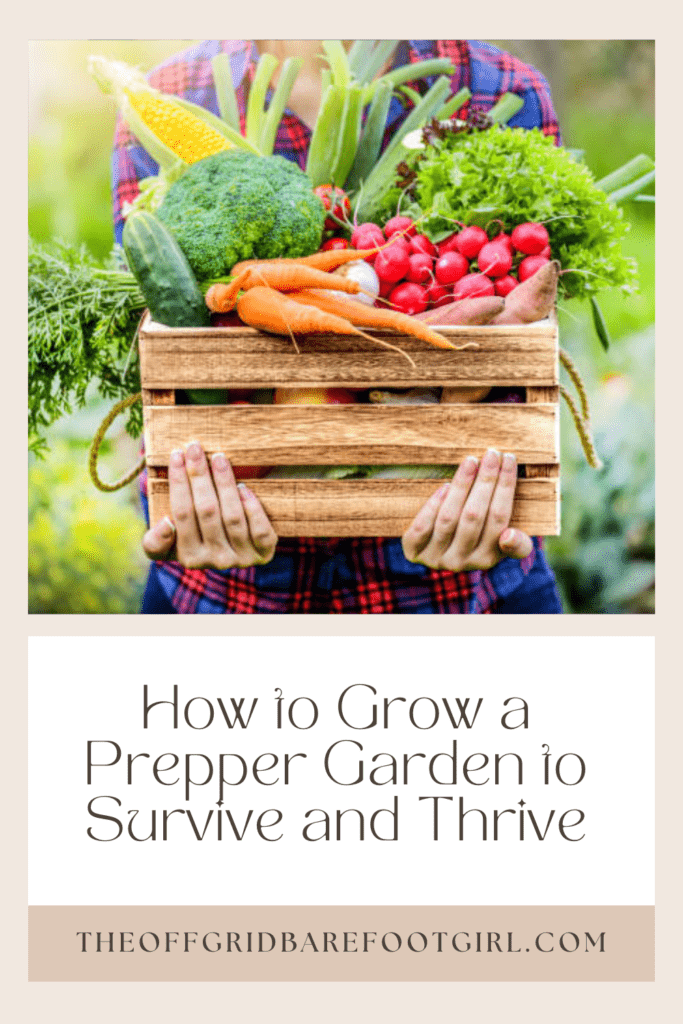
Introduction: The Importance of Prepper Gardens in Emergency Preparedness
Understanding the Role of Prepper Gardens
When it comes to emergency preparedness, having a prepper garden can be a game-changer. These gardens are specifically designed to provide you with a sustainable source of fresh food during times of crisis or uncertainty. They offer a sense of security and self-reliance by ensuring you have access to nutritious food, even if the grocery store shelves are bare.
Benefits of Growing Your Own Food for Survival
Growing your own food not only provides you with a reliable source of sustenance, but it also comes with a range of other benefits. First, it allows you to have control over what you eat, eliminating concerns about pesticides or genetically modified organisms. Secondly, gardening can be a therapeutic and stress-relieving activity, offering a welcome distraction from the chaos of the world. Plus, let’s be honest, there’s something incredibly satisfying about biting into that first tomato you grew yourself!
Why I Built A Survival Garden in My Backyard
I decided to build a survival garden in my backyard because I value self-sufficiency and preparedness. In today’s uncertain world, it feels comforting knowing that I have fresh, nutritious food just steps away from my door. It also serves as a form of insurance against any unforeseen emergencies or disruptions to our food supply chain. Plus, gardening is not only practical, but also incredibly therapeutic. There’s this undeniable sense of accomplishment and connection with nature when you witness seeds transforming into flourishing plants.
This survival garden has allowed me to reconnect with the earth, learn new skills, and reduce my reliance on buying produce from the store. Even on a casual level, having a tangible source of sustenance brings an added joy to everyday life – being able to whip up a delicious meal using ingredients I’ve nurtured from seedling to harvest is truly rewarding!
Learn more about my survival garden in my other post!
Why I Built A Survival Garden in My Backyard
Selecting the Right Location and Designing Your Prepper Garden
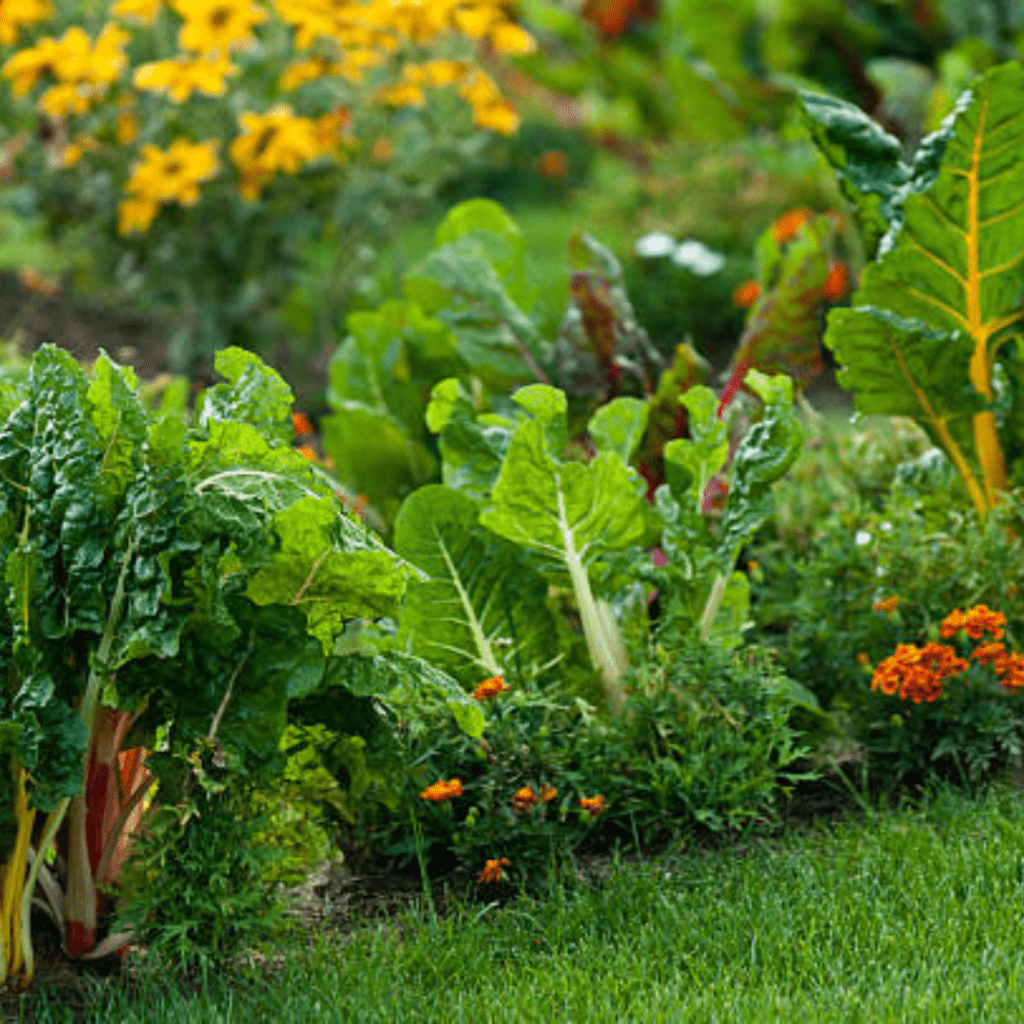
Assessing Available Space and Sunlight
Before diving into prepper gardening, take a look at the available space in your backyard or even consider container gardening if you have limited space. Assess the amount of sunlight the area receives throughout the day, as most vegetables require at least six hours of direct sunlight. Understanding these factors will help you determine the best crops to grow and ensure maximum productivity.
You can grow a garden anywhere the sun shines! If you only have a balcony, I wrote a post specifically for you to show you that you too can have your own garden and homegrown food!
Must-Have Tools for a Successful Balcony Vegetable Garden
Planning the Layout and Structure of Your Garden
When designing your prepper garden, consider the layout and structure that will work best for you. Raised beds are an excellent option for creating defined growing areas and providing easy access for maintenance. Additionally, incorporating pathways between the beds can facilitate movement and reduce soil compaction. Keep in mind that the layout should be practical and efficient for watering, harvesting, and pest management.
Choosing Suitable Container Gardening Options
Container gardening is a fantastic alternative if you have limited space or lack access to a traditional garden area. You can grow a variety of crops in containers, including herbs, leafy greens, and even some root vegetables. Just make sure the containers have proper drainage holes and are large enough to accommodate the plant’s root system.
Square Foot Gardening for Maximum Yield
A square-foot garden is a compact and efficient way of growing veggies and herbs in a small space. It’s perfect for urban dwellers or anyone with limited room in their backyard. The concept is simple: you divide your garden into neat little squares, typically 1 foot by 1 foot, and then plant a specific number of crops in each square depending on their size. This method not only maximizes your harvest, but also minimizes weeds and the need for excessive watering. Plus, it makes maintenance a breeze as everything is organized and easily accessible.
I made it easy for you to plan a square-foot garden with my FREE Square Foot Garden Printable Planner which allows you to plan your spaces with a grid. It even includes a chart of each vegetable for each square foot space of how many of each variety to plant per square space. You can get it just by subscribing to my blog!
FREE Square Foot Garden Printable Planner
Learn more about square-foot gardening in my other post!
Square Foot Garden: The Easy Way To Plan Yours
Essential Crops for Long-Term Food Security
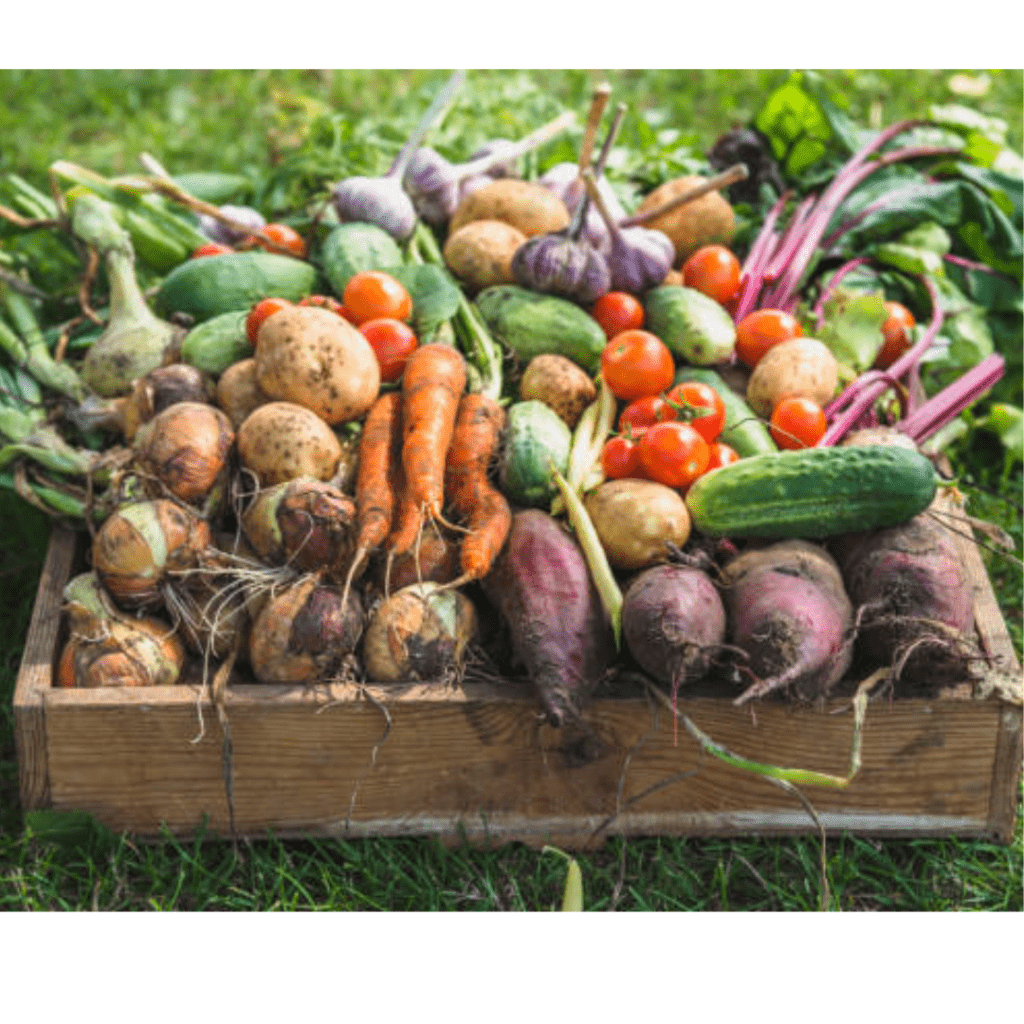
Identifying Nutrient-Dense and High-Yield Crops
When building a prepper garden, it’s essential to focus on crops that provide high nutritional value and yield. Leafy greens like spinach and kale are packed with vitamins and minerals and can be harvested continually. Root vegetables, such as carrots and potatoes, are also excellent choices as they store well and offer essential carbohydrates.
Prioritizing Staple Foods for Sustenance
To ensure long-term food security, prioritize staple foods that can sustain you for extended periods. Grains like quinoa and amaranth are rich in protein and can be stored for long periods once harvested. Legumes, such as beans and lentils, are also excellent choices due to their high protein content and versatility in cooking.
Incorporating Medicinal and Herb Plants
Don’t forget to include medicinal and herb plants in your prepper garden. Plants like lavender, aloe vera, and chamomile can provide natural remedies for common ailments and enhance your overall well-being. Additionally, herbs like basil, thyme, and rosemary can add flavor to your meals and make cooking in a crisis more enjoyable.
I created a category of informational posts I researched and wrote regarding the benefits of herbs and how we can implement them for our well-being. You can learn more about herbal medicine and how each of these herbs packs a powerful punch for our health in my Farmacy category.
Building and Maintaining Sustainable Garden Infrastructure
Constructing Raised Beds and Vertical Gardening Structures
When building sustainable garden infrastructure, raised beds are a popular choice. They offer excellent drainage, provide better control over soil quality, and make gardening more accessible. Additionally, vertical gardening structures, such as trellises or hanging baskets, optimize space and maximize yield.
Implementing Composting Systems for Soil Fertility
To ensure fertile soil for your prepper garden, consider implementing a composting system. Composting not only reduces waste, but also provides nutrient-rich organic matter that can significantly improve soil quality. Start by composting kitchen scraps, yard waste, and even some paper products, and watch your garden thrive. To learn more about composting, I wrote separate posts to help you get started.
- Clever Ways to Incorporate Indoor Composting into Your Home
- How to Start Composting for the Garden: A Step-by-Step Guide
- The Ultimate Guide to Composting in Your Suburban Backyard
Utilizing Greenhouse and Cold Frame Techniques
If you live in a region with a short growing season or unpredictable weather, consider utilizing greenhouse or cold frame techniques. These structures create a controlled environment for your plants, allowing you to extend your growing season and protect your crops from frost or harsh conditions.
Water Management Techniques for Prepper Gardens
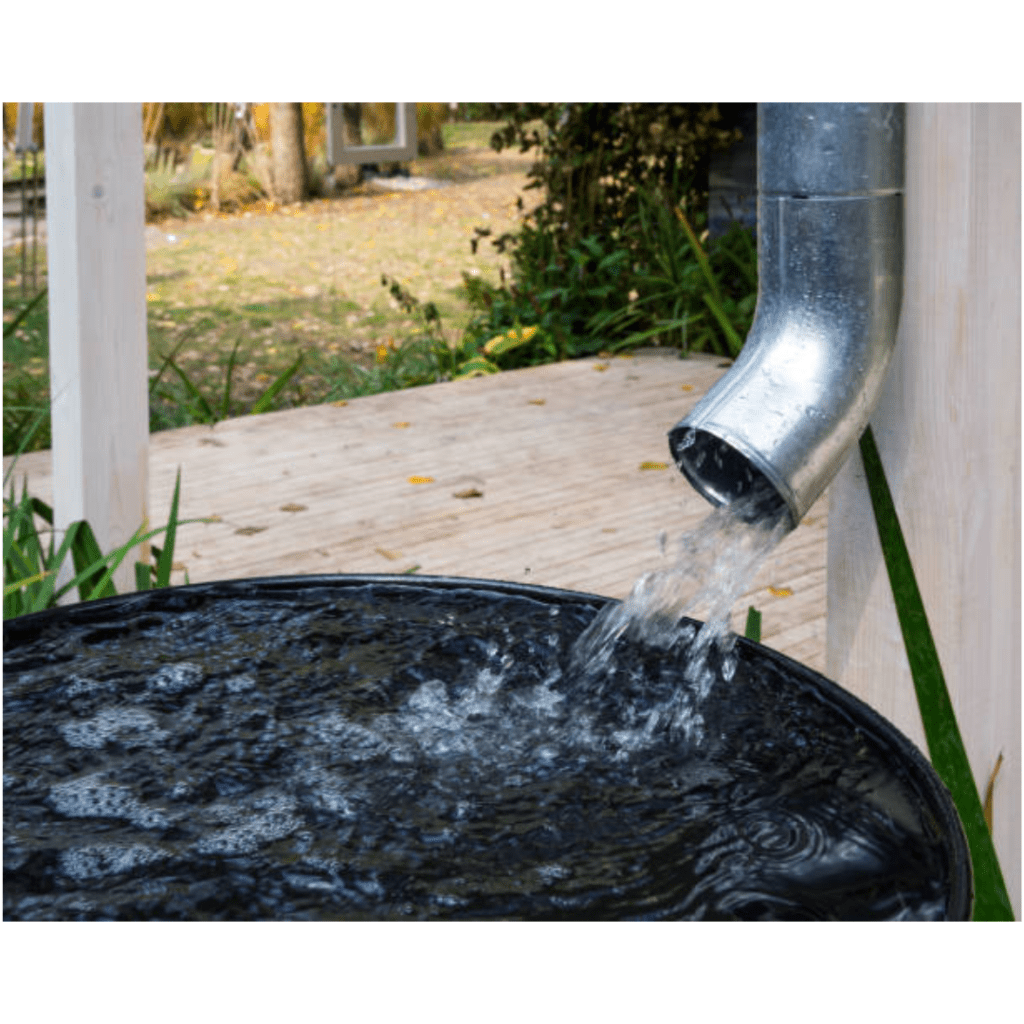
When it comes to growing a prepper garden, water management is essential. Without proper water resources, your plants won’t be able to thrive and provide the sustenance you need. Here are some techniques to ensure your garden has an adequate water supply:
Collecting and Storing Rainwater
Mother Nature’s gift to gardeners, rainwater, can be a valuable resource for your prepper garden. Invest in rain barrels or tanks to collect and store rainwater. This way, you can tap into this free and natural source of water during dry spells or emergencies. Just remember to cover your containers to prevent debris and mosquitoes from invading.
Efficient Irrigation Methods for Water Conservation
Conserving water is not only environmentally friendly, but also crucial for long-term survival. Opt for efficient irrigation methods like drip irrigation or soaker hoses. These systems deliver water directly to the roots, minimizing evaporation and water waste. Plus, they can be easily set up with timers to ensure your plants get just the right amount of hydration.
Analyzing Soil Moisture and Preventing Over/Under-Watering
Finding the balance between over and under-watering can be a challenge, but it’s a skill worth mastering. Invest in a moisture meter or use your green thumb to assess the dampness of the soil. Different plants have different water requirements, so it’s important to tailor your watering schedule accordingly. Remember, soggy roots are just as bad as thirsty ones!
Pest and Disease Control Strategies for Prepper Gardens
Dealing with garden pests and diseases is a battle all gardeners face. However, for a prepper garden, it becomes even more crucial to protect your precious crops. Here are some strategies to keep your plants healthy and pest-free:
Implementing Organic Pest Management Techniques
As a prepper, you’re likely aiming for self-sufficiency and sustainability. Embrace organic pest management techniques to avoid chemical sprays that can harm both you and the environment. Encourage beneficial insects like ladybugs and lacewings to feast on garden pests or create homemade organic pest sprays using ingredients like neem oil or garlic.
I wrote separate posts regarding how to manage a healthy organic garden by implementing natural pest control and disease methods.
- How to Combat Squash Bugs In the Garden
- How to Grow Marigolds As Pest Control In Your Vegetable Garden
- How to Effectively Combat Powdery Mildew in Your Garden
- The Best Tips for Organic Gardening
- How to Release Ladybugs In Your Garden for Organic Pest Control
- The Best Garden Snail Control Strategies
Identifying Common Garden Pests and Diseases
Know thy enemy! Familiarize yourself with the common pests and diseases that can attack your prepper garden. From aphids to powdery mildew, each pest and disease requires specific control methods. Regularly inspect your plants to catch any signs of trouble early on, because prevention is always better than a full-blown infestation.
Utilizing Companion Planting and Natural Predators
Nature has its own army of helpers to combat garden pests. Take advantage of companion planting by growing insect-repellent flowers and herbs alongside your crops. Marigolds and basil are great examples. Additionally, welcome natural predators such as birds, frogs, or even praying mantises to your garden. They’ll happily snack on any pests that dare to visit.
I wrote a separate post regarding how to effectively do companion planting with a helpful chart about which plants are friends and enemies.
How to Do Companion Planting: Friends or Foes?
Harvesting, Preserving, and Storing Produce for Long-Term Survival
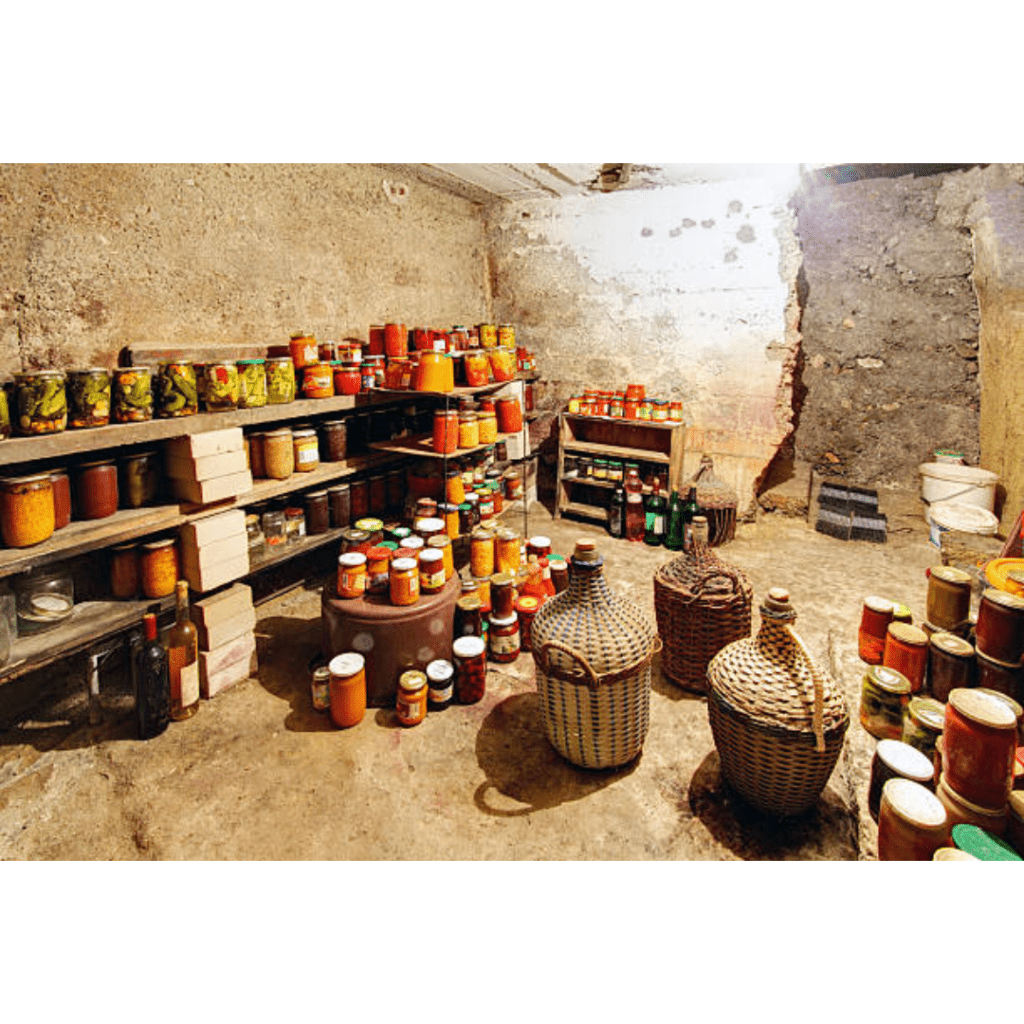
All your hard work in the garden pays off when it’s time to harvest your bountiful produce. But how do you make it last for the long haul? Follow these tips for harvesting, preserving, and storing your crops effectively:
Knowing When and How to Harvest Different Crops
Timing is everything when it comes to harvesting. Research the optimal harvest time for each crop to ensure the best flavor and nutritional value. Harvest leafy greens when they’re young and tender, pick tomatoes when they’re fully ripe, and cut root vegetables when they’ve reached their desired size. Use clean and sharp tools to prevent any damage to the plants.
Appropriate Preservation Methods for Extended Shelf Life
Preserving your garden’s bounty is essential for long-term survival. Depending on the produce, different preservation methods come into play. Canning, freezing, dehydrating, and fermenting are popular ways to extend the shelf life of fruits and vegetables. Experiment with different techniques to find what works best for you and your taste preferences.
Creating Proper Storage Conditions to Avoid Spoilage
Storing your preserved produce properly is key to avoiding spoilage. Keep canned goods in a cool and dark place, away from extreme temperatures. Freeze fruits and vegetables in airtight containers or freezer bags to prevent freezer burn. For dehydrated or fermented items, ensure they are stored in a moisture-free environment to maintain their quality.
Remember, growing a prepper garden is not just about surviving; it’s about thriving. By mastering water management, pest control, and proper preservation techniques, you’re on your way to becoming a self-sufficient gardening expert. So get out there, plant those seeds, and reap the rewards of your own little oasis of survival and deliciousness!
Conclusion: Embracing Self-Sufficiency Through Prepper Gardening
In conclusion, prepper gardening offers a practical and empowering solution for individuals and families seeking to enhance their emergency preparedness. By cultivating your own food through a prepper garden, you not only ensure a sustainable source of nourishment during challenging times, but also reduce dependency on external food systems. Remember to prioritize staple crops, implement sustainable gardening practices, and learn preservation techniques to store your harvest for the long term. Embrace the journey of self-sufficiency and take pride in your ability to provide for yourself and your loved ones in any situation. Start your prepper garden today and embark on a path towards resilience and thriving.
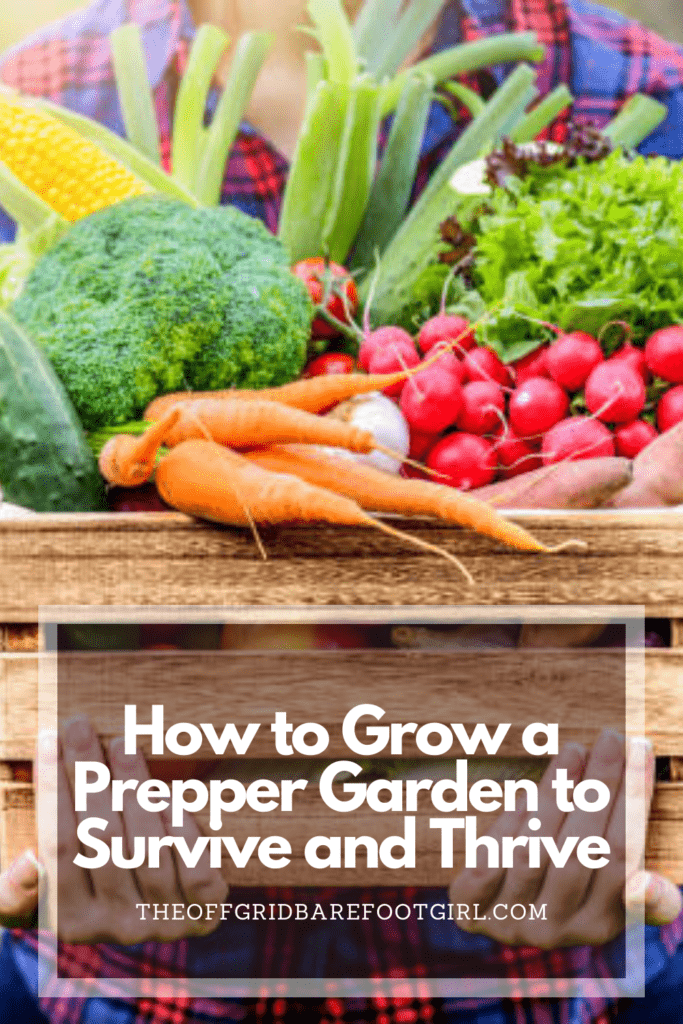
Frequently Asked Questions
1. Can I start a prepper garden even if I have limited space?
Yes, absolutely! Even if you have limited space, you can still create a productive prepper garden. Consider utilizing vertical gardening techniques, container gardening, or even utilizing small areas such as balconies or windowsills. The key is to maximize the use of available space and choose crops that are well-suited for small-scale gardening.
2. How do I ensure my prepper garden remains sustainable in the long run?
Maintaining sustainability in your prepper garden involves various practices. Implementing organic gardening methods, such as using compost and natural pest control, helps create a healthy ecosystem. Additionally, practicing crop rotation, preserving soil fertility, and conserving water through efficient irrigation techniques all contribute to the long-term sustainability of your garden.
3. How can I optimize my prepper garden for year-round food production?
To optimize your prepper garden for year-round food production, consider choosing a diverse range of crops with staggered planting and harvesting times. Incorporate cold frames or greenhouses to extend the growing season, and explore techniques such as succession planting and intercropping. By carefully planning and selecting crops suitable for different seasons, you can enjoy a continuous supply of fresh produce throughout the year.
4. How do I store and preserve the excess harvest from my prepper garden?
Storing and preserving the excess harvest from your prepper garden is crucial for long-term survival. There are various methods you can utilize, including canning, freezing, dehydrating, and root cellaring. Each method has its own requirements and benefits, so it’s important to learn proper techniques to maintain the quality and nutritional value of your preserved produce.
Summary
I hope I have inspired you to grow a prepper garden with these tips and products.
If you were encouraged by this post, I invite you to check out my FREE Printables Page for fun free printables, planners, and charts.
ENTER MY FREE Printables Page HERE
Here are some more of my gardening inspiration posts to check out!
The Best Garden Tools You Need for a Productive Season
Fastest Growing Vegetables for Your Survival Garden
How to Grow Marigolds As Pest Control In Your Vegetable Garden
Must-Have Tools for a Successful Balcony Vegetable Garden
How to Effectively Combat Powdery Mildew in Your Garden
The Best Tips for Organic Gardening
How to Release Ladybugs In Your Garden for Organic Pest Control
The Best Garden Snail Control Strategies
The Best Spring Vegetables to Grow in Your Garden
Seed Starter Mix: How To Make Your Organic Seed Starter Mix At Home
How to Grow a Productive Canning Garden
How to Plant and Grow a Salsa Garden
Easiest Heirloom Vegetable Seeds to Grow Now
How to Use the Hand Twist Claw Tiller: Tackling Tough Soil
Planning Your Garden: How to Plan a Vegetable Garden: Expert Green Thumb Tips!
Winterizing the Garden: How to Winterize Your Vegetable Garden: Step-by-Step Checklist
Mulching the Garden: How to Make Leaf Litter Mulch
Grow a Pumpkin Patch: How to Grow a Pumpkin Patch in Your Backyard
How to Grow a Fall Garden: 9 Best Fall Crops
Clever Ways to Incorporate Indoor Composting into Your Home
How to Start Composting for the Garden: A Step-by-Step Guide
The Ultimate Guide to Composting in Your Suburban Backyard
Why I Built A Survival Garden in My Backyard
16 Best Medicinal Herbs to Grow in Your Garden Now
Blessings,
The Off Grid Barefoot Girl




